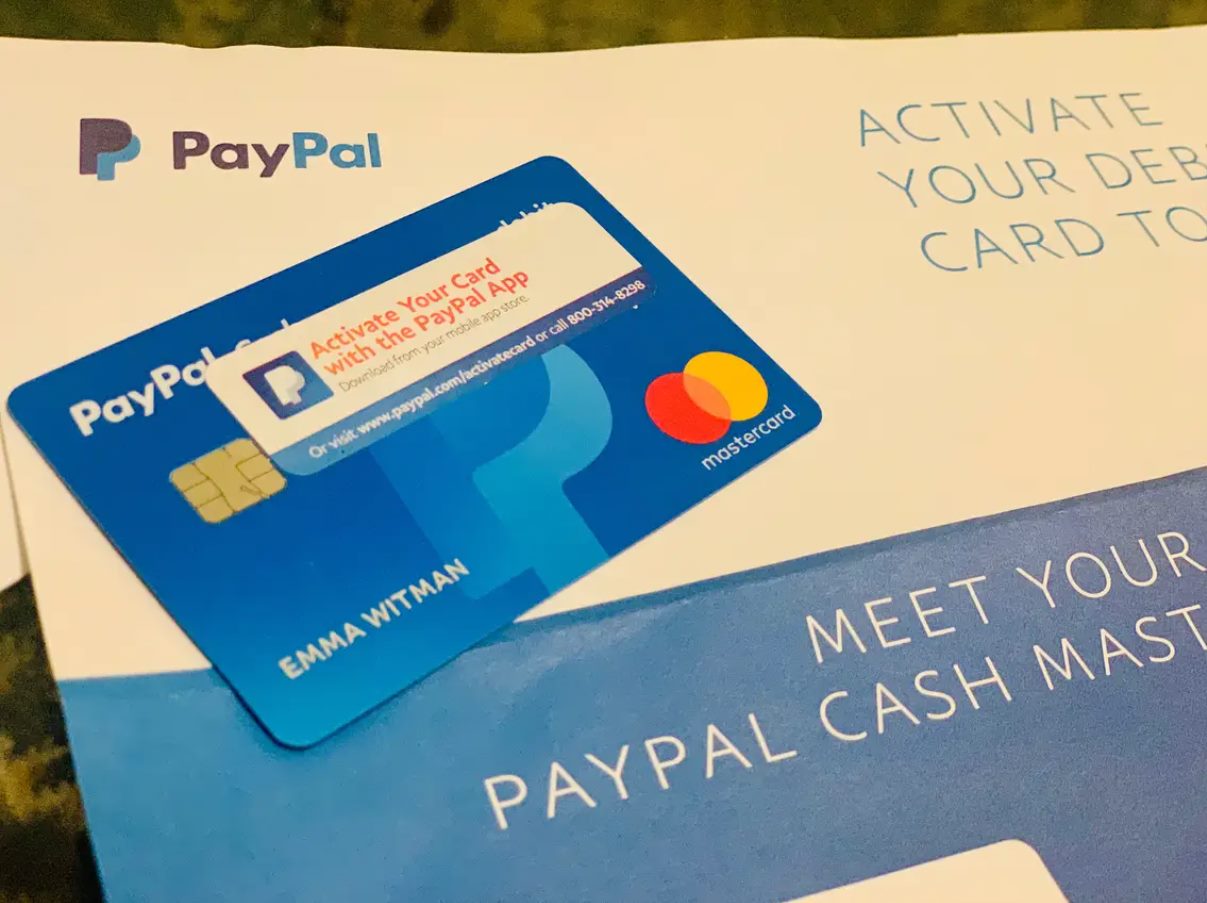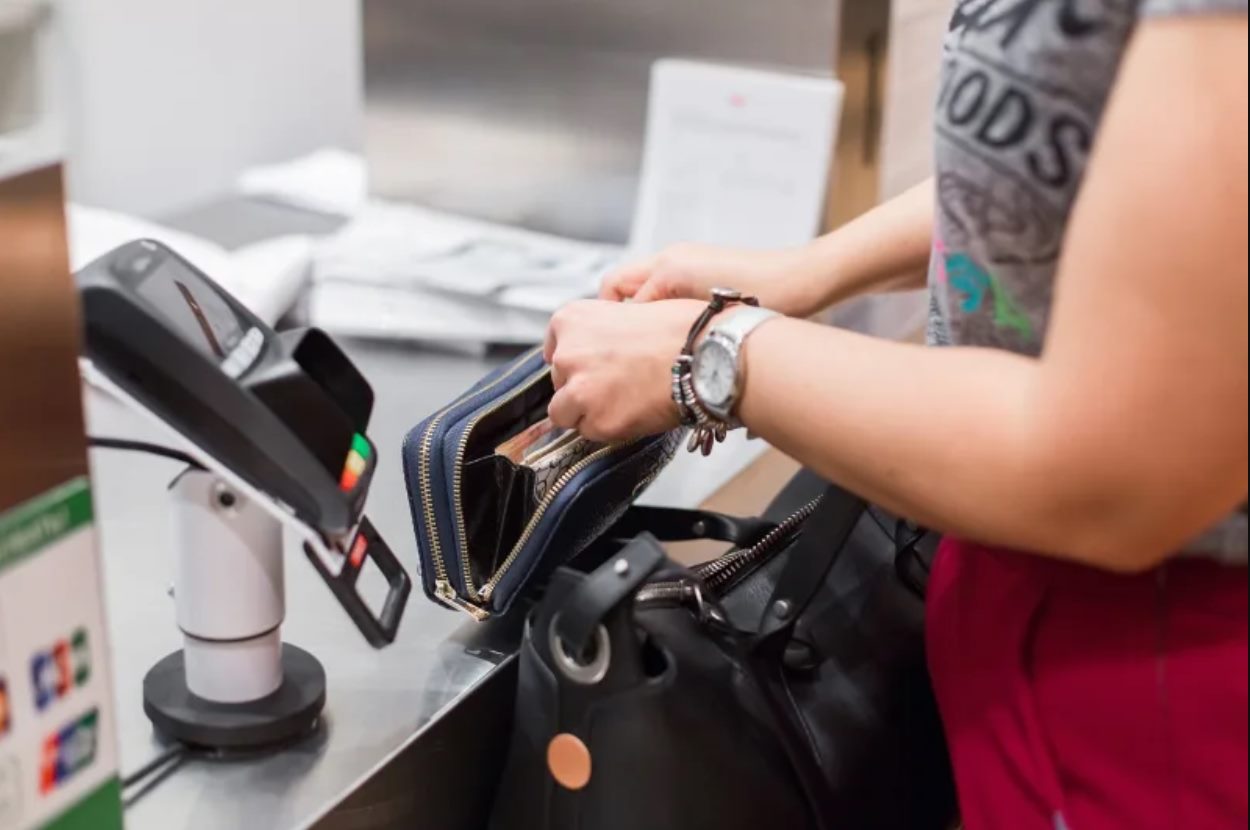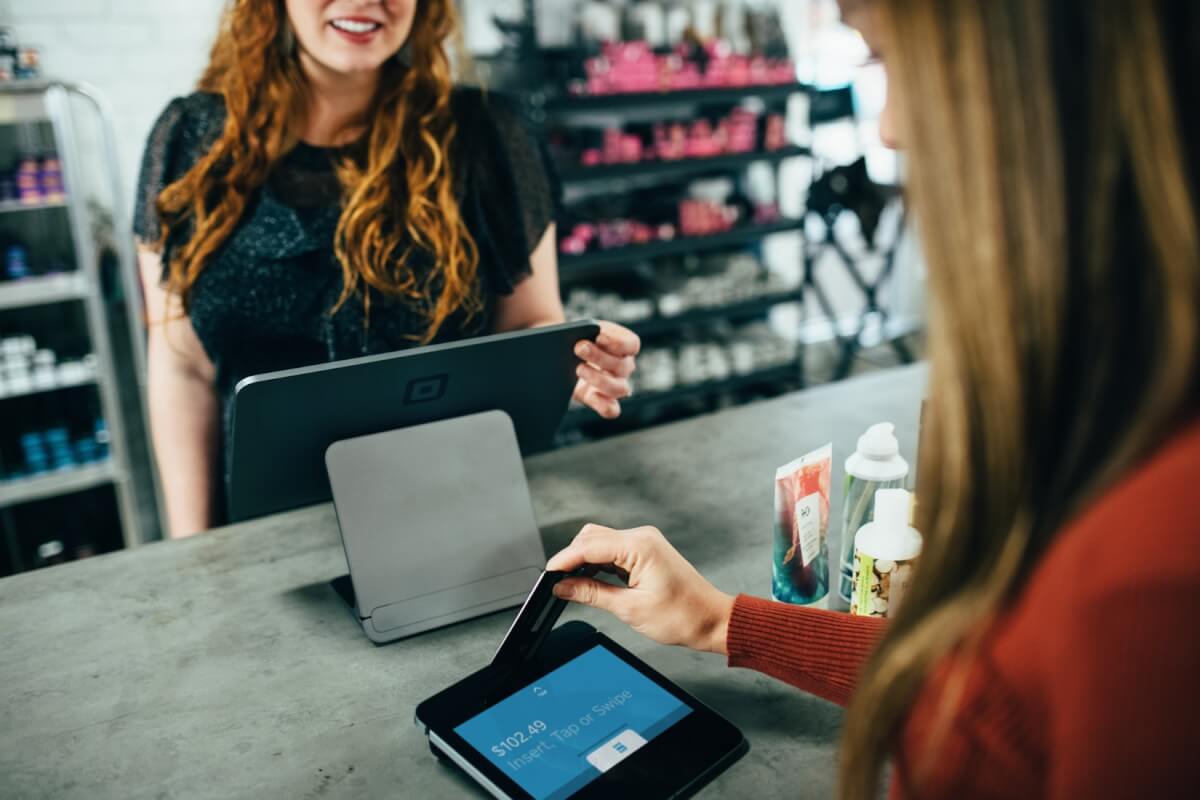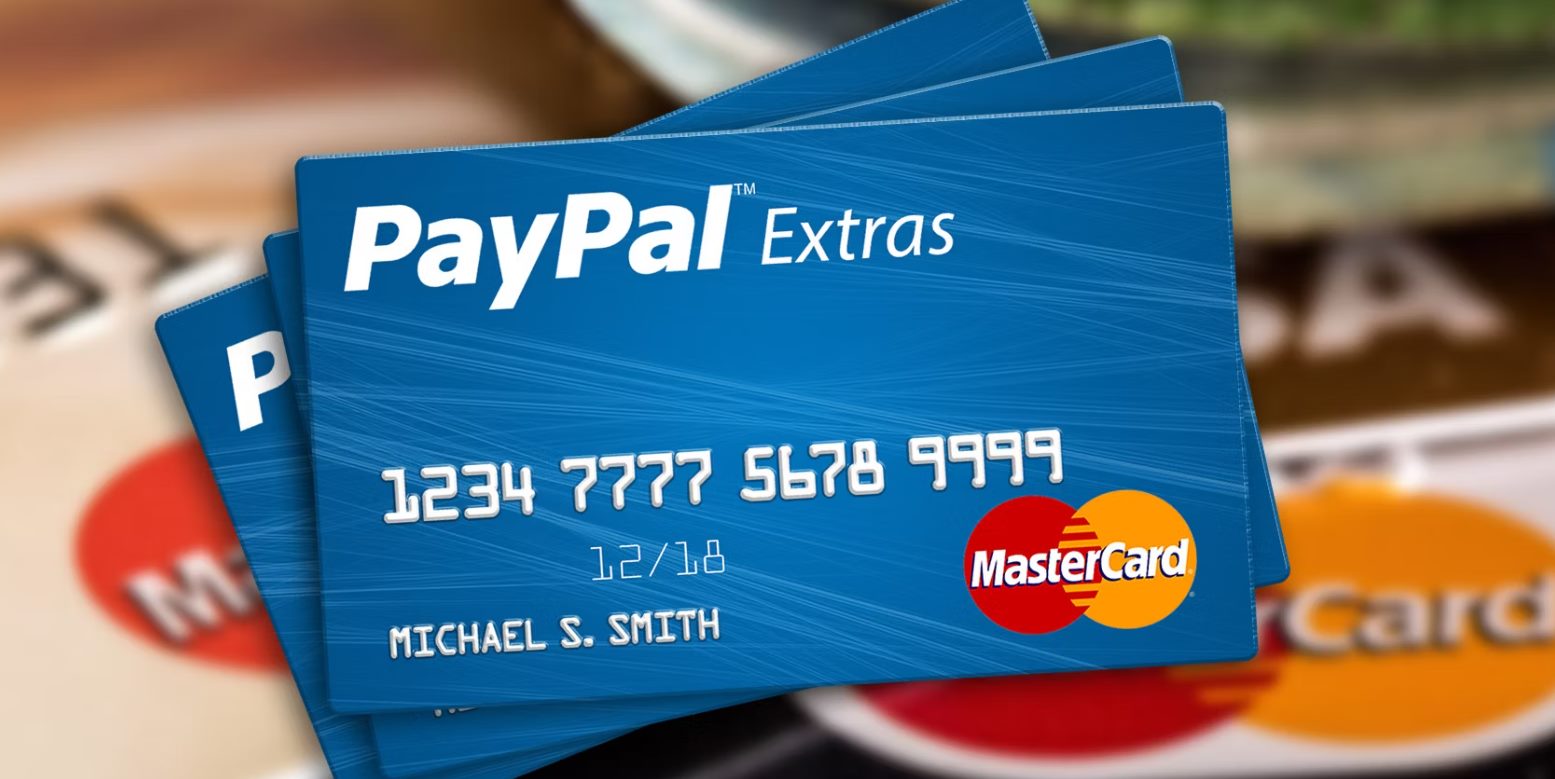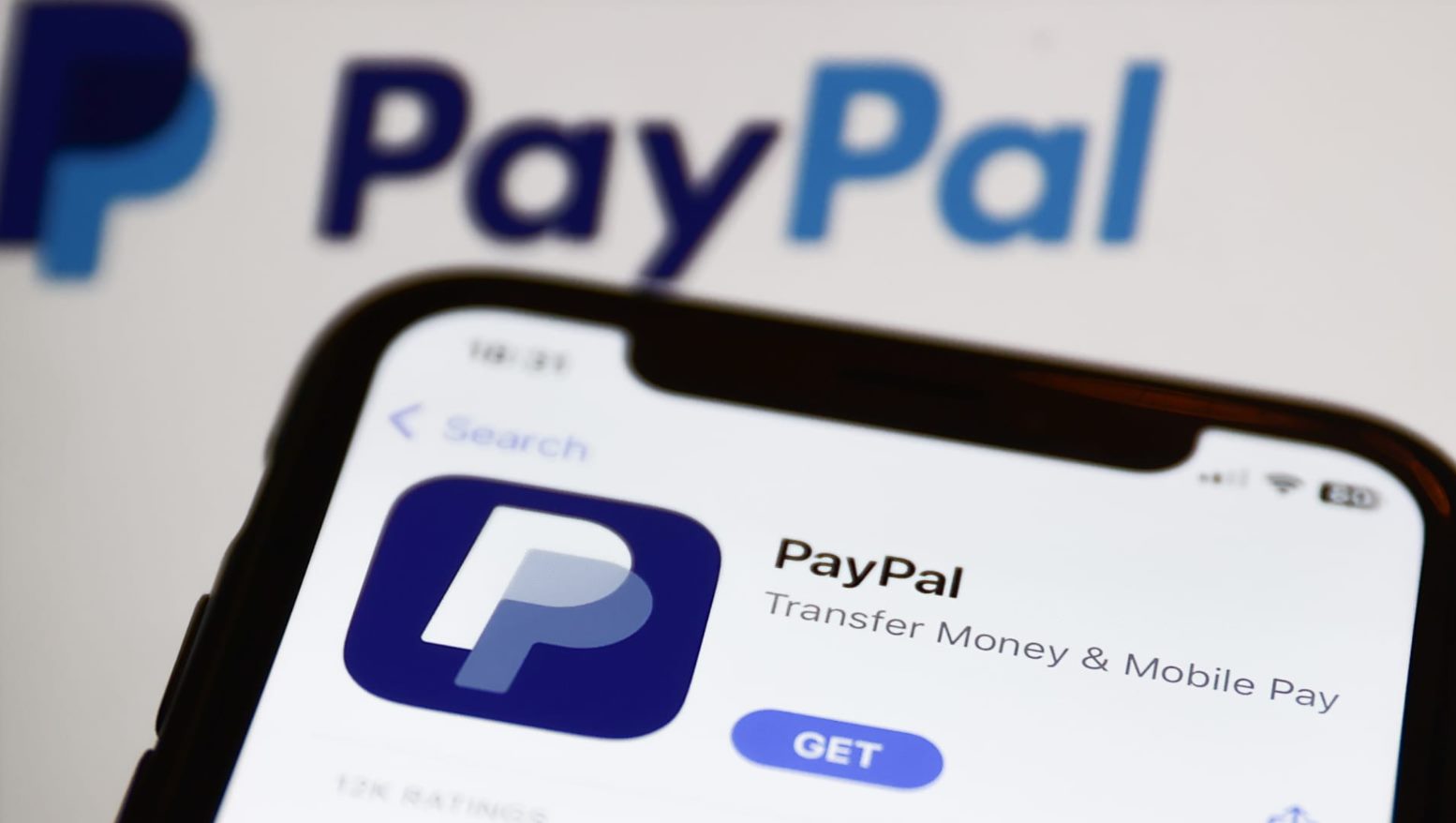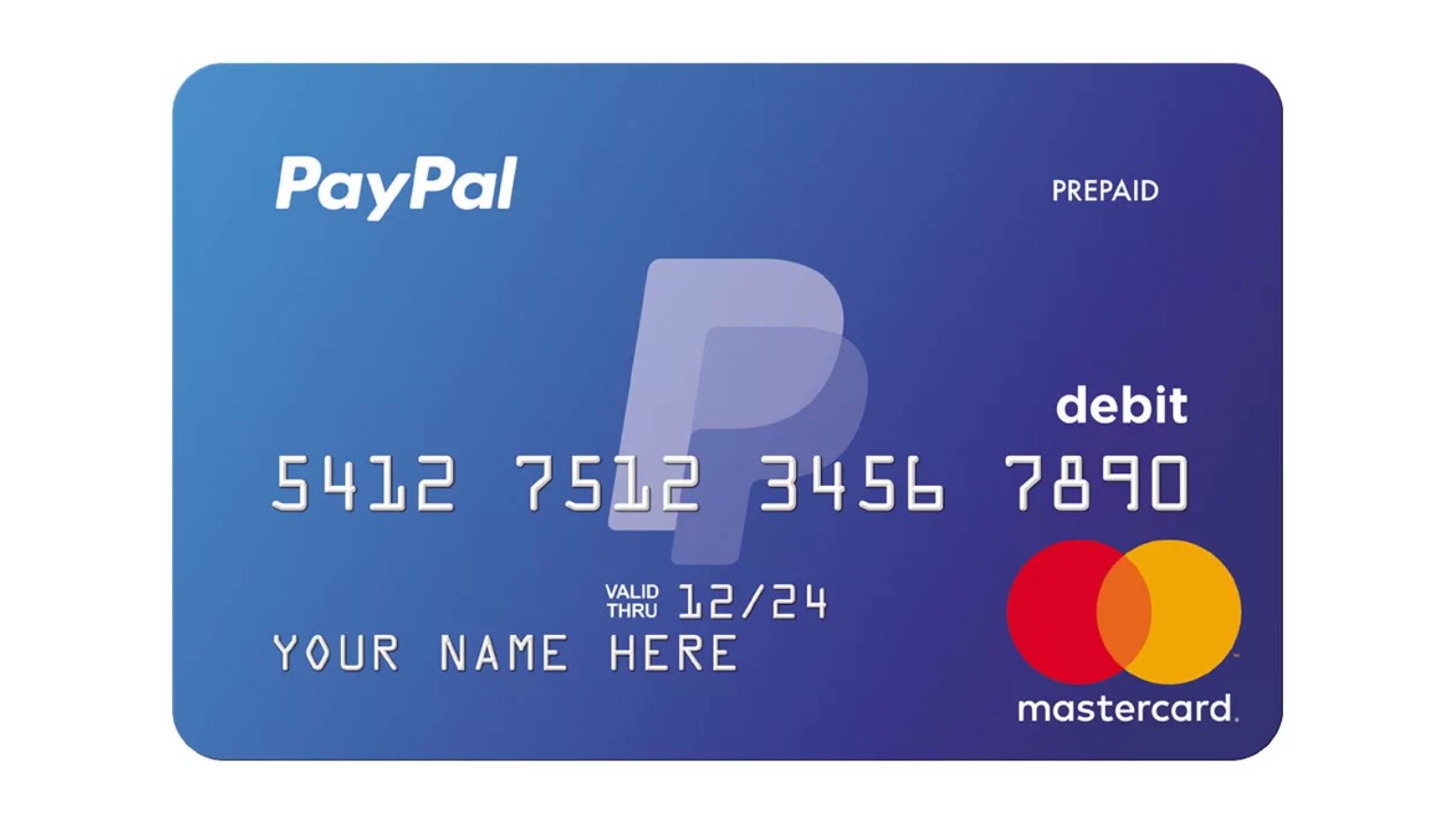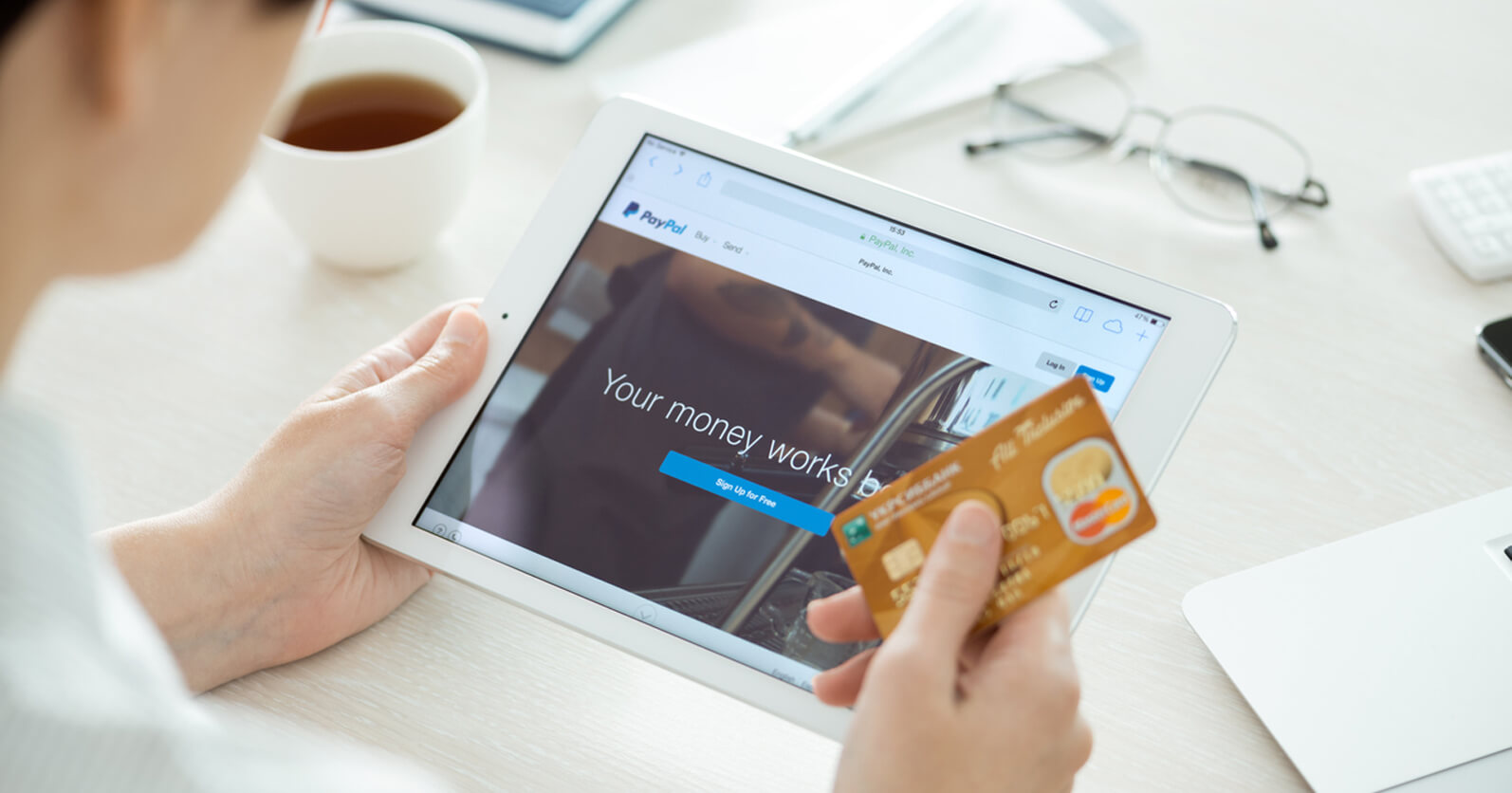Why should I get a PayPal card?
A PayPal card offers numerous benefits that make it a valuable addition to your financial arsenal. Whether you are a frequent online shopper or a small business owner, here are some compelling reasons to consider getting a PayPal card:
- Convenience: With a PayPal card, you can make purchases online or in-store with ease. It eliminates the need to carry cash or search for your wallet. Simply swipe or tap your PayPal card, and the transaction is complete.
- Global acceptance: PayPal cards are widely accepted, both online and offline, making them a versatile payment method. Whether you’re making a purchase from a local retailer or an international website, you can use your PayPal card confidently.
- Rewards and discounts: Many PayPal cards offer rewards programs or cashback incentives for using the card. This allows you to earn points or receive discounts on future purchases, saving you money in the long run.
- Secure transactions: PayPal has a reputation for providing secure online transactions. When you use your PayPal card, your sensitive payment information is not shared with the merchant, reducing the risk of fraud or identity theft.
- Easy budgeting: With a PayPal card, you can keep track of your spending and manage your finances more effectively. Most PayPal cards provide online access to transaction history, allowing you to monitor your purchases and set spending limits.
- Flexibility: PayPal cards can be linked to your PayPal account, giving you access to additional features and services. You can easily transfer funds from your PayPal account to your card, giving you more flexibility in managing your money.
In summary, a PayPal card offers convenience, global acceptance, rewards, security, easy budgeting, and flexibility. It provides a seamless payment experience and can be a valuable tool for anyone who wants to simplify their financial transactions and enjoy the perks that come with it.
How to apply for a PayPal card
Applying for a PayPal card is a straightforward process that can be completed in just a few steps. Here’s a guide on how to apply for a PayPal card:
- Create a PayPal account: If you don’t already have one, visit the PayPal website and sign up for a free account. Provide the necessary information, such as your name, email address, and password. Make sure to verify your email before proceeding.
- Log into your PayPal account: Once your account is set up, log in to your PayPal account using your credentials.
- Navigate to the PayPal card section: From your account dashboard, click on the “Wallet” tab. Under the “Debit and credit cards” section, select “Link a card” or “Get a card” to proceed with the application process.
- Fill in the required information: Provide the necessary details, including your personal and contact information. You may be required to input your full name, address, phone number, and social security number, among other information. Ensure that all information is accurate and up to date.
- Review and submit your application: Carefully review the provided information for accuracy. Once you are satisfied, click the “Submit” or “Apply” button to send your application to PayPal for review.
- Wait for approval: PayPal will review your application and determine your eligibility for a PayPal card. This process usually takes a few business days. You will receive an email notification regarding the status of your application.
- Receive your PayPal card: If your application is approved, PayPal will mail your physical card to the address you provided during the application process. The card will be sent in a secure envelope to protect it during transit.
Remember, the availability of PayPal cards may vary depending on your location, so make sure to check if PayPal cards are offered in your country or region.
In summary, applying for a PayPal card involves creating a PayPal account, logging in, navigating to the card section, filling in the required information, submitting your application, and waiting for approval. Once approved, you will receive your PayPal card by mail, ready to be activated and used for your financial transactions.
What are the requirements?
Before applying for a PayPal card, it’s essential to understand the requirements to ensure a smooth application process. The specific requirements may vary depending on your country or region, but here are some common prerequisites for getting a PayPal card:
- Age: You must be at least 18 years old to apply for a PayPal card. This is to comply with legal regulations and ensure that the cardholder is of legal age to enter into financial agreements.
- PayPal account: To obtain a PayPal card, you must first have a PayPal account. Creating an account is free and can be done by visiting the PayPal website and signing up. Make sure to provide accurate personal information during the account registration process.
- Address verification: PayPal requires a verified address for card applications. This means that the address you provide must match the address associated with your PayPal account. This verification helps prevent fraudulent activity and ensures successful delivery of your card.
- Identification: You may be required to provide identification documents to verify your identity. This can include a government-issued ID, such as a passport or driver’s license. PayPal may also request additional documents, such as proof of address, to validate your application.
- Valid email address and contact information: A valid email address is necessary as it is used for communication throughout the application process. Make sure to provide a contact number as well, as PayPal may need to reach out to you for further verification or to provide updates regarding your application.
- Compliance with PayPal policies: It is important to adhere to PayPal’s terms and conditions when applying for a PayPal card. Ensure that you meet any additional requirements specified by PayPal, such as maintaining a good account standing, complying with PayPal’s acceptable use policy, and avoiding any activities that may pose risks to your account.
Remember, specific requirements may vary depending on your location and the type of PayPal card you are applying for. It’s always a good idea to consult PayPal’s official website or contact their customer support for the most accurate and up-to-date information.
In summary, the requirements for getting a PayPal card typically include being of legal age, having a PayPal account, providing a verified address, verifying your identity through identification documents, having a valid email address and contact information, and complying with PayPal’s policies and guidelines.
How long does it take to receive a PayPal card?
The time it takes to receive a PayPal card can vary depending on several factors, including your location and the shipping method chosen by PayPal. While exact timelines may differ, here is a general overview of the process:
- Processing time: Once you have submitted your application for a PayPal card and it has been approved, PayPal will begin processing your request. Typically, this process takes a few business days. During this time, PayPal will verify your information, perform necessary security checks, and prepare your card for shipment.
- Card production: Once your application has been processed and approved, PayPal will produce your physical PayPal card. This usually takes a couple of business days. The card is personalized with your name and other details associated with your account.
- Shipping time: After the card has been manufactured, it will be shipped to the address you provided during the application process. The shipping time can vary depending on your location and the shipping method chosen by PayPal. It typically ranges from a few days to a couple of weeks. PayPal may provide a tracking number so that you can monitor the progress of the shipment.
- Delivery: Once the PayPal card has been shipped, it will be delivered to the address provided during the application. Ensure that the address is accurate and up to date to avoid any delivery issues. The card will arrive in a secure envelope to protect it during transit.
It’s important to note that these timelines are estimates and can vary. Factors such as peak periods, customs regulations, and unforeseen circumstances may impact the delivery time. If you have not received your PayPal card within the expected timeframe, you can contact PayPal’s customer support for assistance.
In summary, the time it takes to receive a PayPal card typically includes a processing period, card production, shipping time, and delivery. While the entire process usually takes a couple of weeks, it can be longer or shorter depending on various factors, such as your location and the shipping method chosen by PayPal.
How to activate my PayPal card
Activating your PayPal card is a simple process that ensures your card is ready to be used for transactions. Here are the steps to activate your PayPal card:
- Receive your PayPal card: Once you have applied and been approved for a PayPal card, you will receive the physical card in the mail. It will arrive in a secure envelope to protect it during transit.
- Check for activation instructions: Inside the envelope, you will find instructions on how to activate your PayPal card. These instructions may vary depending on the card issuer and the specific card you have received. Read through the instructions carefully to ensure you follow the correct process.
- Visit the activation website or call the provided number: Most commonly, you will be directed to visit a specific website to activate your PayPal card. Enter the URL in your web browser or follow the instructions provided. Alternatively, you may be asked to call a toll-free number to activate your card. Follow the instructions and provide the necessary details as prompted.
- Enter activation details: When activating your PayPal card, you may be required to provide specific information to verify your identity. This can include your card number, the three-digit security code on the back of the card, and other personal details. Follow the prompts and enter the information accurately.
- Confirm activation: After entering the necessary details, you will typically be asked to confirm your activation request. Review the information you provided to ensure it is correct and then confirm your activation. Once the activation is successful, you will receive a confirmation message.
- Sign the back of your card: Before you start using your PayPal card, remember to sign the back of the card. This step adds an extra layer of security and helps prevent unauthorized use of your card.
It’s important to note that the activation process may vary depending on the card issuer and the specific card you have received. Always follow the instructions provided with your PayPal card to ensure a successful activation.
In summary, after receiving your PayPal card, carefully follow the provided activation instructions. This typically involves visiting an activation website or calling a toll-free number, entering the required details, confirming the activation, and signing the back of your card. Once activated, you can start using your PayPal card for secure and convenient transactions.
What can I use my PayPal card for?
A PayPal card offers a range of functionalities, allowing you to make various types of transactions conveniently and securely. Here are some common uses for your PayPal card:
- Online purchases: You can use your PayPal card to make purchases on websites that accept PayPal as a payment method. Simply enter your card information during the checkout process, and the transaction will be processed securely.
- In-store purchases: Many merchants accept PayPal cards for in-person transactions. Simply swipe or tap your card at the point of sale, enter your PIN if required, and the payment will be authorized. This makes it a convenient alternative to carrying cash or using a traditional debit or credit card.
- ATM withdrawals: Depending on the type of PayPal card you have, you may be able to withdraw cash from ATMs. Look for ATMs that display the logos of the card networks affiliated with your PayPal card. Be mindful of any withdrawal limits or associated fees that may apply.
- Bill payments: Some service providers, such as utility companies or subscription services, may accept PayPal cards as a form of payment. Check with your service providers to see if they offer this option. You may be able to set up recurring payments using your PayPal card, simplifying the bill payment process.
- International transactions: PayPal cards are widely accepted globally, making them an excellent option for international transactions. Whether you’re traveling or making a purchase from an international merchant, you can use your PayPal card with confidence, eliminating the need for currency exchange or additional payment methods.
- Online money transfers: Since your PayPal card is linked to your PayPal account, you can transfer funds between your PayPal account and your card. This allows you to easily access and manage your funds, making it convenient for personal or business use.
These are just a few examples of what you can use your PayPal card for. The specific functionalities may vary depending on the type of PayPal card you have and the services available in your region. Always check with PayPal or refer to your card’s terms and conditions for a complete understanding of its features and uses.
In summary, a PayPal card can be used for online and in-store purchases, ATM withdrawals, bill payments, international transactions, and online money transfers. It provides a versatile and convenient payment solution, making your financial transactions easier and more flexible.
How to add funds to your PayPal card
Adding funds to your PayPal card is a simple process that allows you to load money onto your card for future transactions. Here are the steps to add funds to your PayPal card:
- Link a bank account: To add funds to your PayPal card, you’ll need to link a bank account to your PayPal account. Log in to your PayPal account and navigate to the “Wallet” section. Click on “Link a bank account” and follow the prompts to provide the necessary information to link your bank account.
- Verify your bank account: Once you’ve linked your bank account, PayPal will make a small deposit into your bank account. Check your bank statements or online banking to find the deposit amount. Return to your PayPal account and confirm the deposit amount to verify your bank account.
- Add funds from your bank account: After verifying your bank account, you can add funds to your PayPal card. In your PayPal account, go to the “Wallet” section and click on “Add money.” Select your linked bank account and enter the amount you want to add. Follow the prompts to complete the transaction.
- Initiate a direct deposit: If you receive regular payments or income, such as an employer paycheck or government benefits, you can initiate a direct deposit to add funds to your PayPal card. Contact your employer or the institution responsible for your payments and provide them with your PayPal card’s account number and routing number.
- Transfer funds from your PayPal account: If you have a balance in your PayPal account, you can transfer funds from your PayPal account to your PayPal card. Log in to your PayPal account and go to the “Transfer Money” section. Select the option to transfer funds to your card and follow the prompts to complete the transfer.
It’s important to note that there may be fees associated with adding funds to your PayPal card, such as a percentage of the transaction amount or a flat fee. Review PayPal’s fee schedule or contact their customer support for detailed information on any applicable fees.
In summary, adding funds to your PayPal card involves linking a bank account, verifying the account, adding funds from your bank account, initiating a direct deposit, or transferring funds from your PayPal account. These options provide flexibility and convenience in managing the funds available on your PayPal card.
How to withdraw funds from your PayPal card
Withdrawing funds from your PayPal card allows you to access the money loaded onto your card and use it as cash. Here are the steps to withdraw funds from your PayPal card:
- Locate an ATM: Find an ATM that accepts the card network associated with your PayPal card. Look for logos such as Visa or Mastercard on the ATM. Make sure you are aware of any withdrawal fees that may apply.
- Insert your PayPal card: Insert your PayPal card into the ATM’s card slot. Follow the on-screen prompts to proceed with the withdrawal transaction.
- Enter your PIN: You’ll need to enter the PIN (personal identification number) associated with your PayPal card. Ensure that you enter the PIN accurately to access your card’s funds.
- Select the withdrawal amount: Choose the amount you want to withdraw from your PayPal card. Be mindful of any withdrawal limits imposed by the ATM or your card issuer. Some ATMs may have pre-set withdrawal options, while others allow you to enter a specific amount.
- Collect your cash: Once you’ve confirmed the withdrawal amount, the ATM will dispense the cash. Remove the cash from the ATM and securely store it.
- Check your PayPal card balance: After the withdrawal, it’s important to check your PayPal card balance to ensure that the correct amount was deducted. You can do this by checking your transaction history through your PayPal account or using an associated mobile app, if available.
- Use the cash: The cash withdrawn from your PayPal card can be used for various purposes, such as making purchases from merchants that don’t accept card payments or paying for goods and services where cash is the preferred method of payment.
It’s important to note that there may be withdrawal limits associated with your PayPal card, as well as fees imposed by the ATM or your card issuer. Familiarize yourself with these limits and fees before initiating a withdrawal to avoid any surprises.
In summary, withdrawing funds from your PayPal card involves locating an ATM, inserting your card, entering your PIN, selecting the withdrawal amount, collecting the cash, checking your card balance, and using the cash for your desired transactions. This provides you with the flexibility to access and use your card’s funds as cash when needed.
How to link your PayPal card to your PayPal account
Linking your PayPal card to your PayPal account is a crucial step to ensure seamless integration and access to additional features. Here’s a step-by-step guide on how to link your PayPal card to your PayPal account:
- Log in to your PayPal account: Access your PayPal account by visiting the PayPal website and entering your login credentials. If you don’t have an account, you’ll need to create one before proceeding.
- Navigate to the Wallet section: Once logged in, locate the “Wallet” tab or section within your PayPal account. Click on it to access your PayPal wallet, where you’ll find various options for managing your payment methods.
- Find the “Link a card” option: Look for the option to “Link a card” within the wallet section. This option may be displayed as “Link a debit or credit card” or something similar, depending on your PayPal account interface.
- Enter your card details: Follow the prompts to enter your PayPal card’s information. This typically includes the card number, expiration date, security code, and possibly the cardholder’s name. Ensure that you provide accurate and up-to-date information.
- Confirm and verify your card: After entering your card details, PayPal may ask you to verify the card. This verification step is often done by PayPal making a small temporary charge to your card and requiring you to confirm the amount charged. Check your card statements or online banking to find the amount, and then enter it into the provided field to complete the verification process.
- Accept terms and conditions: Review and accept any terms and conditions related to linking your PayPal card. Ensure that you understand and agree to any fees, policies, or restrictions associated with linking and using your PayPal card.
- Confirm successful linking: Once you have completed the process, PayPal will confirm that your card has been successfully linked to your PayPal account. You should see the card listed in your PayPal wallet or payment methods section.
After linking your PayPal card to your PayPal account, you’ll have the option to select it as your preferred payment method for online purchases, in-store transactions, or accessing additional features and services offered by PayPal.
In summary, to link your PayPal card to your PayPal account, log in to your account, navigate to the wallet section, find the “Link a card” option, enter your card details, confirm and verify the card, accept any terms and conditions, and confirm the successful linking. This ensures that your PayPal card is seamlessly integrated with your PayPal account for easy and secure transactions.
How to check your PayPal card balance
Keeping track of your PayPal card balance is essential to ensure you have sufficient funds for your transactions. Here are a few methods to check your PayPal card balance:
- Online via PayPal: The most convenient way to check your PayPal card balance is by logging into your PayPal account online. Once logged in, navigate to the “Wallet” section or the page that displays your linked cards. Here, you should be able to view the current balance associated with your PayPal card.
- Through the PayPal mobile app: If you prefer to check your PayPal card balance on the go, you can download and install the official PayPal mobile app on your smartphone. Log in to the app using your PayPal account credentials, and within the app, you should be able to access your PayPal card balance.
- Using the PayPal automated phone service: If you don’t have access to the internet or a smartphone, you can check your PayPal card balance by calling PayPal’s automated phone service. Dial the designated phone number provided by PayPal for balance inquiries and follow the voice prompts to obtain your card balance.
- Contacting PayPal customer support: If you encounter any issues or need assistance in checking your PayPal card balance, you can contact PayPal customer support. They can provide real-time information about your card balance and help with any inquiries or concerns you may have.
It’s important to note that the available methods for checking your PayPal card balance may vary depending on your region and the services provided by PayPal. Always refer to PayPal’s official website or contact their customer support for the most up-to-date information and assistance.
In summary, you can check your PayPal card balance online through your PayPal account, using the PayPal mobile app, via the PayPal automated phone service, or by reaching out to PayPal’s customer support. These methods ensure that you have easy access to your PayPal card balance, allowing you to manage your funds and make informed financial decisions.
How to manage your PayPal card through the PayPal app
The PayPal app provides a convenient and user-friendly way to manage your PayPal card directly from your smartphone. Here are some key features and steps to manage your PayPal card through the PayPal app:
- Download and install the PayPal app: Start by downloading and installing the official PayPal app from your device’s app store. The app is available for both iOS and Android devices.
- Log in or sign up for a PayPal account: Launch the app and log in to your existing PayPal account. If you don’t have an account, you can sign up for one directly through the app.
- Access the Manage Card section: After logging in, navigate to the menu or settings section of the app. This may be denoted by three lines or a gear icon. Look for an option related to managing your cards or payment methods, and select it.
- Select your PayPal card: From the Manage Card section, you should see a list of linked cards, including your PayPal card. Tap on your PayPal card to access its management options.
- View your card details: In the card management section, you can view various details associated with your PayPal card. This includes the card number, expiration date, associated bank account, transaction history, and current balance.
- Set card preferences: The PayPal app allows you to customize certain card preferences, such as enabling or disabling international transactions, setting spending limits, or enabling push notifications for card transactions. Explore the options available to personalize your card settings according to your preferences.
- Manage card security: The app provides options to enhance the security of your PayPal card. You can enable features such as two-factor authentication for added protection, as well as report a lost or stolen card and request a replacement if needed.
- Add funds or transfer funds: Through the PayPal app, you can easily add funds to your PayPal card or transfer funds from your PayPal account to your card. Look for the respective options within the app’s interface and follow the prompts to complete the transactions.
- Monitor your transactions: The PayPal app allows you to keep track of your card transactions. You can review your transaction history, view transaction details, and even export transaction records for personal record-keeping or accounting purposes.
- Contact customer support: If you encounter any issues with your PayPal card or need assistance, the app provides convenient access to PayPal’s customer support. You can initiate a chat session or make a phone call directly from the app to get the help you need.
The specific features and options available within the PayPal app may vary, so explore the app thoroughly to familiarize yourself with all the tools for managing your PayPal card.
In summary, the PayPal app offers a range of features to manage your PayPal card efficiently. By downloading and logging into the app, you can access your card details, customize preferences, enhance security, add or transfer funds, monitor transactions, and contact customer support, all from the convenience of your smartphone.
Where can I use my PayPal card?
A PayPal card can be used at a wide range of locations, both online and offline, making it a versatile payment method. Here are some common places where you can use your PayPal card:
- Online retailers: Many online retailers accept PayPal cards as a payment method. Look for the PayPal logo or the option to pay with PayPal at the checkout page. Simply enter your PayPal card information to complete your purchase.
- Physical stores: PayPal cards can be used for in-store purchases at various physical stores. Look for the contactless payment symbol or ask the cashier if they accept contactless payments. Simply tap or insert your PayPal card into the card reader and follow the prompts to complete the transaction.
- Restaurants and cafes: Some restaurants and cafes accept PayPal cards for payment. Check with the establishment beforehand or look for the PayPal logo displayed near the cash register. Inform the server or cashier that you would like to pay with your PayPal card.
- Gas stations: Many gas stations accept PayPal cards at their pumps or in-store. Look for the contactless payment symbol at the pump or inquire with the cashier if they accept PayPal payments. Follow the prompts to complete the transaction when prompted.
- Travel bookings: PayPal cards can be used to book flights, hotels, car rentals, and other travel services. Look for the PayPal payment option when making your travel arrangements online. Enter your PayPal card information to complete the booking process.
- Online service providers: Various online service providers, such as freelancers, consultants, and subscription-based platforms, accept PayPal cards for payments. Look for the PayPal payment option or inquire with the service provider directly.
It’s important to note that the acceptance of PayPal cards may vary by location and may depend on the specific card network associated with your PayPal card (e.g., Visa or Mastercard). Always look for the accepted payment methods or contact the merchant beforehand to confirm if they accept PayPal cards as a form of payment.
In summary, you can use your PayPal card at a wide variety of places, including online retailers, physical stores, restaurants and cafes, gas stations, travel bookings, and online service providers. The flexibility and convenience of PayPal cards make them a versatile payment option for your everyday transactions.
How to protect your PayPal card from fraud
Protecting your PayPal card from fraud is essential to ensure the security of your financial information and prevent unauthorized transactions. Here are some important steps you can take to protect your PayPal card:
- Keep your card secure: Treat your PayPal card like you would any other payment card. Keep it in a safe and secure place, such as a wallet or cardholder, to minimize the risk of loss or theft.
- Enable card notifications: Take advantage of any card notification features provided by PayPal or your card issuer. Enable push notifications or email alerts to receive instant updates on your card activity, including transactions and account changes.
- Regularly review your transactions: Regularly monitor your PayPal card transactions by reviewing your account activity. Check for any suspicious or unrecognized charges and report them to PayPal immediately if you identify any fraudulent activity.
- Protect your card details: Be cautious when sharing your card information. Only provide your PayPal card details on secure and reputable websites. Avoid storing your card information on public computers or sharing it with unfamiliar or untrusted individuals or businesses.
- Use strong, unique passwords: Maintain strong and unique passwords for your PayPal account and any associated email addresses. Avoid using easily guessable passwords and update them regularly.
- Be cautious of phishing attempts: Be aware of phishing attempts where individuals may try to deceive you into revealing your PayPal card or account information. Avoid clicking on suspicious links or providing personal information in response to unsolicited emails, messages, or phone calls.
- Secure your devices: Protect the devices you use to access your PayPal account by enabling security measures such as passcodes, biometric authentication, and device encryption. Keep your operating system and apps up to date to ensure you have the latest security patches.
- Use secure networks: Be cautious when using public Wi-Fi networks, as they can be less secure. Avoid entering sensitive information or making financial transactions using public Wi-Fi. Instead, use secure and private networks when accessing your PayPal account.
- Report lost or stolen cards: If your PayPal card is lost or stolen, report it immediately to PayPal’s customer support. They can block your card to prevent unauthorized use and issue a replacement card.
- Keep your contact information updated: Regularly review and update your contact information, such as your email address and phone number, in your PayPal account. This ensures that you receive important account notifications and can be contacted promptly regarding any suspicious activity.
By following these steps, you can significantly reduce the risk of fraud and protect your PayPal card and account from unauthorized access and transactions. Stay vigilant and promptly report any suspicious activity to PayPal’s customer support.
In summary, protecting your PayPal card from fraud involves keeping your card secure, enabling card notifications, reviewing your transactions regularly, protecting your card details, using strong passwords, being cautious of phishing attempts, securing your devices and networks, reporting lost or stolen cards, and keeping your contact information updated.
How to report a lost or stolen PayPal card
If your PayPal card is lost or stolen, it’s crucial to take immediate action to protect your account and prevent unauthorized use. Here are the steps to report a lost or stolen PayPal card:
- Access your PayPal account: Log in to your PayPal account using your login credentials. Make sure you have your account information readily available.
- Go to the Resolution Center: From your PayPal account dashboard, navigate to the Resolution Center. This can often be found in the main menu or profile settings.
- Select the “Report a problem” option: Within the Resolution Center, find and select the “Report a problem” or “Dispute a transaction” option. This will initiate the process of reporting the lost or stolen card.
- Choose “Unauthorized Activity” or “Lost/Stolen Card”: Depending on the available options, select the appropriate reason for contacting PayPal regarding your lost or stolen card. This will help direct your report to the correct department.
- Provide details of the incident: Fill out the necessary fields with the required details about the incident. Include specifics such as the date the card was lost or stolen, any relevant transaction information, and any additional information that may assist in the investigation.
- Submit the report: After filling out the report form, review the information for accuracy and completeness. Once you are satisfied, submit the report to PayPal.
- Contact PayPal customer support: To ensure that your report is promptly addressed, it’s recommended to contact PayPal’s customer support directly. Visit the PayPal website or app to find the appropriate customer support contact details, such as phone numbers or email addresses.
- Follow any additional instructions: PayPal may provide further instructions or request additional information to assist in resolving the issue. Cooperate with them and provide any requested details promptly. Be prepared to answer questions about recent transactions, purchases, or any other relevant account information.
- Monitor your account activity: After reporting your lost or stolen PayPal card, regularly monitor your account activity for any unauthorized transactions. Report any suspicious activity to PayPal immediately.
Remember, it’s crucial to report a lost or stolen PayPal card as soon as possible to protect your account and minimize potential financial risk. By following these steps and promptly contacting PayPal, you can ensure that appropriate measures are taken to secure your account and issue a replacement card if needed.
In summary, to report a lost or stolen PayPal card, access your PayPal account, go to the Resolution Center, select the appropriate option, provide details of the incident, submit the report, contact PayPal customer support, follow any additional instructions, and monitor your account activity.
Frequently Asked Questions (FAQs) about PayPal cards
Here are some common questions and answers regarding PayPal cards:
- What is a PayPal card?
A PayPal card is a physical or virtual card that is linked to your PayPal account. It allows you to make purchases, withdraw cash from ATMs, and access other financial services using funds from your PayPal account. - How do I apply for a PayPal card?
To apply for a PayPal card, you need to have a PayPal account. Log in to your account, navigate to the wallet section, and follow the instructions to apply for a PayPal card. Provide the required information, and once approved, your card will be sent to your registered address. - How long does it take to receive a PayPal card?
The time it takes to receive a PayPal card varies, but it typically takes a few business days to process the application and an additional few days for shipping. The exact time may depend on your location and the shipping method chosen by PayPal. - Can I use my PayPal card internationally?
Yes, PayPal cards are widely accepted internationally. However, it’s important to check if the country or merchant you’re in accepts PayPal cards as a payment method. Also, keep in mind any foreign transaction fees that may apply. - Can I link multiple PayPal cards to my PayPal account?
Yes, you can link multiple PayPal cards to your PayPal account. This can be helpful if you want to manage different types of cards or have separate cards for personal and business use. However, be aware of any limits or restrictions that apply to multiple card usage. - What happens if my PayPal card is lost or stolen?
If your PayPal card is lost or stolen, report it immediately to PayPal’s customer support. They can block your card to prevent unauthorized use and issue a replacement card. It’s crucial to act quickly to protect your account and funds. - Are there any fees associated with using a PayPal card?
PayPal cards may have certain fees, such as ATM withdrawal fees, foreign transaction fees, or inactivity fees. Review PayPal’s fee schedule or terms and conditions for a complete understanding of any applicable fees. - Can I withdraw cash from my PayPal card?
Yes, depending on the type of PayPal card you have, you may be able to withdraw cash from ATMs. Look for ATMs displaying the logos of the card networks affiliated with your PayPal card. Keep in mind any withdrawal limits or associated fees. - Can I add funds to my PayPal card?
Yes, you can add funds to your PayPal card. You can do this by linking a bank account to your PayPal account and transferring funds from the bank account to your PayPal card. Some cards also allow direct deposit for adding funds. - Can I use my PayPal card with Apple Pay or Google Pay?
Yes, depending on the type of PayPal card you have, you may be able to link your PayPal card to applications like Apple Pay or Google Pay. This allows you to make contactless payments using your PayPal card on supported devices.
These are just a few of the frequently asked questions about PayPal cards. For more specific information or further inquiries, it’s recommended to visit the PayPal website or contact their customer support for assistance.







